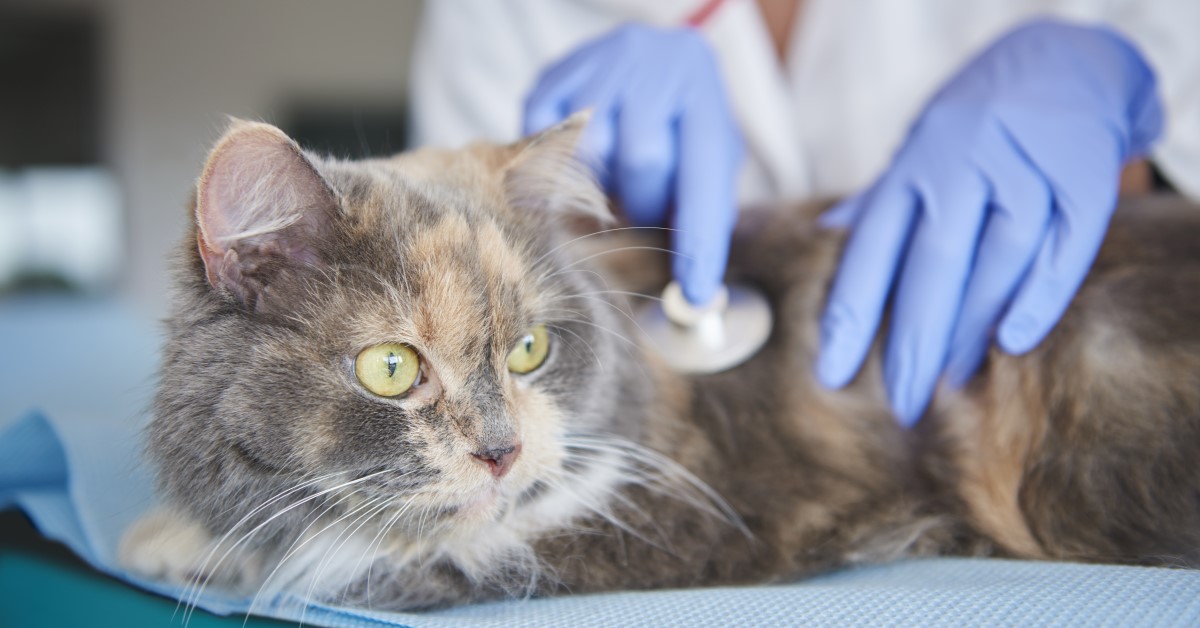Starting a Pet Food Bank in Your Area
These are vitally important, especially during difficult economic times

You may have noticed an increasing number of news stories about pets being surrendered by owners who can’t afford to feed them. With the frequent news stories about layoffs and foreclosures, more pet food banks are being established to address this heartbreaking situation.
Here is some helpful information and useful ideas for setting up a pet food bank in your area. This article deals with an established pet food bank with ongoing distribution rather than a one-time pet food drive.
Every venture starts small, so any size pet food bank would certainly be helpful and greatly appreciated by needy pets. You can start with distribution of food once a week in a nearby parking lot, or even a table in a retail store (both of course, after obtaining proper authorization and permission) with those in need picking up food from you. If available, you could share space in a community food bank for people, and distribute food on a daily basis. Large city wide participation may be harder to achieve, but is a goal you could set for the future, once your pet food bank is well established. This larger goal might be something a scouting group, neighborhood group or church group might be able to accomplish.
Getting Started
Before you can start a pet food bank, you’ll need to gather some important information and consider the following:
- Who will coordinate the program? This person will take responsibility for all efforts coming together smoothly to help maximize your efforts and the amount of pet food gathered for distribution. This person will also check with local officials to make sure you adhere to any restrictions or regulations that need to be followed during both the gathering and distribution of the pet food.
- Where are you going to establish your pet food distribution point? You will have to canvas some local parking lots and retail stores to find areas where you are likely to get the best response from local pet owners and also get permission (if necessary) to set up tables or distribute from cars (if you are a mobile distributor).
- Will you need to file any papers with city and local offices? Make sure your town or city does not prohibit such activity. There may also be fees involved when actually distributing the food, so make sure you check this thoroughly.
- How will you actually gather pet food? There are several ways to gather food for distribution. Community pet food drives can be conducted by individual neighborhoods or churches for distribution by your pet food bank.
Gathering Pet Food
You can ask people to leave pet food donations by animal shelters, local or regional food banks (for people), a partnership of pet food stores or pet lovers with the time and organizational skills to coordinate the effort. With an increasing number of animals at shelters, shelters may not have the time, room or staff to be responsible for the drive, but may be able to offer ideas on planning and implementing a pet food bank program. If you team up with an already established group in your community, you may get more donations initially.
If you need to set up a new organization, you’ll need to file for tax-exempt status. Starting a new tax-exempt organization requires that you educate potential donors of your purpose. No matter how you approach your organizational status, be sure to keep donors informed of what you’re receiving in donations (both dollar and pounds of pet food) and specifically what you’ve accomplished. For example, how many pounds were distributed last month, how many families picked up food, etc.
Who Will Receive the Food?
Will you qualify recipients based on income, limit the food based on number of pets, etc? If you have a very large number of people asking for food relative to food available, you may need to establish some qualifiers to be sure the food is fairly distributed.
Pet food banks can also provide food to animal rescue groups or animal shelters. Since their donations are down, helping them provide food for their animals will help these pets live another day.
Where Will the Food be Stored and Distributed?
If food is donated or collected at a variety of drop off points, how will the food be transported to the distribution point where those in need pick up the food? For an ongoing community wide effort in which citizens donate food at drop off points around town, it’s quite an undertaking to pick up all the food and deliver it to a central distribution point. Dependable volunteers with the muscle and vehicles to do this are essential.
If food is donated on pallets by the truckload from a food manufacturer, obviously it should be shipped directly to a central distribution point. For distribution, think of groups already providing food for citizens in need, such as food banks and programs which deliver food to homebound or disabled citizens. By working with an established food bank, you’d be reaching those in need since no doubt their pets need food too. If these groups can accept donations and deliveries of food, this would be the easiest way to establish a pet food pantry. Of course they will need enough warehouse space to do this. Even if your local food bank chooses not to set up an ongoing pet food bank or can’t due to budget limitations, ask the director if there’s any way to work out an arrangement to work together.
If you have no established food bank to team up with, you could work with a retail store to help you store the food until you can distribute it. You could also advertise for someone to donate a storage space. Often retail stores or other businesses have plenty of extra storage space they might donate. It might also be a good idea to check with local veterinarians and kennels in your area that would be willing to set up bins for animal lovers to drop off pet food. For distribution, you could establish a weekly pickup day from that store’s location or parking lot. This arrangement requires a good bit of manual labor to collect the food and take it to that location.
Finding Food Donations
This is the real challenge – to find ongoing donations of food to help needy pets. Anything helps, so even a steady stream of food in small amounts is appreciated.
If there are no options in your area to partner with a food bank, you’ll need to start from scratch. Think big! You could approach the mayor, animal control, or even an association of business owners in your community to help generate food or money donations for a community food bank. Pet lovers are everywhere, and no one likes the idea of pet owners giving up their beloved pets as a last resort when they’re financially strapped. Contact the local shelter for facts and figures on what’s happening in your community. Ask questions like:
- How many pets have been surrendered?
- How many of those have been euthanized?
- What’s the daily cost of those animals to be housed at the shelter?
Ask for donations from pet food stores or pet food manufacturers. Often pet food chains are willing to donate slightly damaged pallets of food (the same concept as grocery stores donating what they believe they can’t sell to food banks). Contact the stores in your area regarding this possibility.
Set up drop off bins at a variety of businesses in your community so shoppers and clients can drop off donations. Perhaps pet food stores, pet boutiques, kennels, veterinarians' offices, etc. would be willing to accept bins. You’ll need a group of volunteers to pick up this food on a regular basis and deliver it to your food distribution point.
An ongoing and committed food supply along with dollar donations is ideal to keep the program going. You’ll need a secure web site that accepts donations. Paypal is an easy way to accept donations online.
If you can set up a program for donors to donate money and buy food yourself at a discounted price, that would be ideal. Buying in volume is much cheaper than individuals buying retail. Perhaps you could work out an arrangement with a local pet food store and/or large chain store to purchase food at a price slightly marked up from the wholesale price they pay so they still make money but sell in volume.
Find a committed group of organizations or associations in your community to donate on a regular basis. Contact the local merchants association, community centers, and neighborhood recreation centers, as these groups strive to reach out to the community in helpful ways. To keep a pet food bank supplied with food, a steady stream of donations from a variety of locals plus pet food drives coordinated by groups like these would be a great help.
Your Pet Food Bank's Mission
Your goal is to help families affected by the current economic climate by keeping their pets fed so they can remain with the families who love them. By providing a place where owners can get the pet food they need, they won't have to consider surrendering their companion animal due to lack of food.
The pet food bank will serve families in need on a first-come, first-served basis. Pet owners wishing to participate will need to provide personal contact information, as well as the number and size of pets in the household. By working with local businesses and community groups to build a solid chain of contributors, coordinators and helpers, you may be able to help people and pets as long as they need you.
Ready to start saving money on pet wellness care?
Then take a look at Mint Wellness, the pet wellness plan that provides fast reimbursement on routine pet care. Save on vaccinations, wellness exams, preventatives, dental, and more!
Learn More


